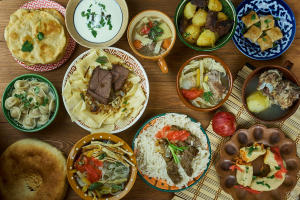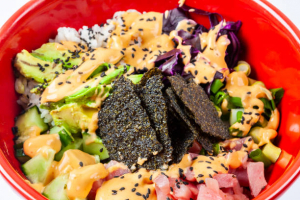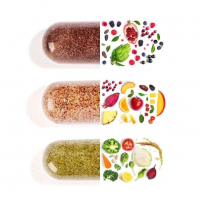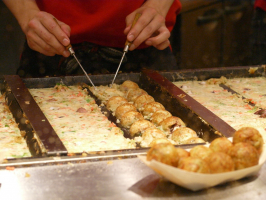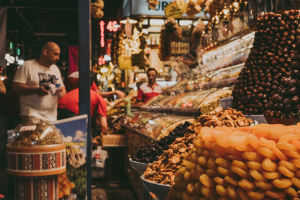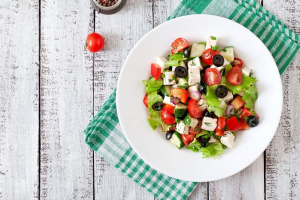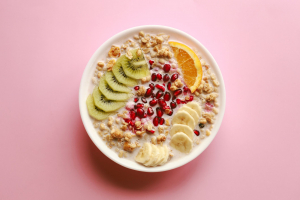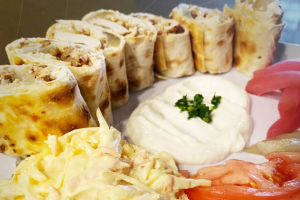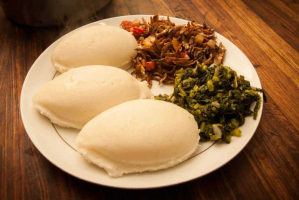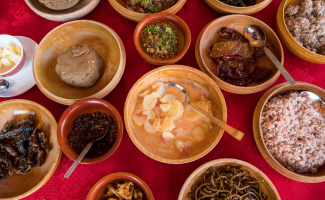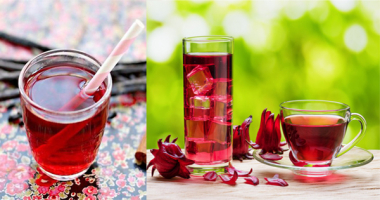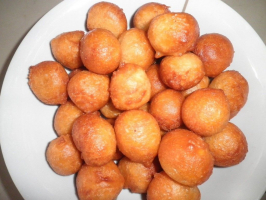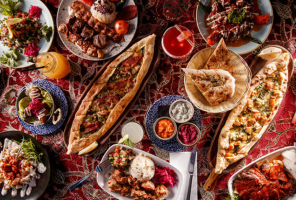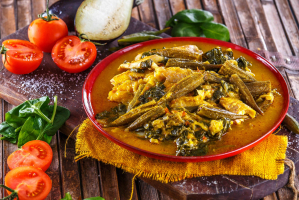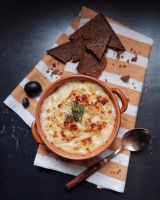Top 10 Best Uzbek Foods
Freshly killed meat and locally cultivated vegetables are important components of the Uzbek cuisine. While traveling along the Silk Road, you should try the ... read more...local Uzbek food. You're in luck if you're wondering what to eat in Uzbekistan. Toplist has produced a list of 10 meals you should try when visiting Uzbekistan.
-
If you enjoy dumpling foods, you should try Manti. It refers to a boiled or steamed dumpling that is popular in many nations across Central Asia, the Balkans, and the South Caucasus. It's the Uzbek variant of Chinese baozi/jiaozi, Korean mandu, Tibetan momo, or Monoglian buuz, made with ground meat wrapped in thin dough.
Manti size, shape, and contents might differ from location to region. In Central Asia, they are often larger in size and steamed in a multi-level metal steamer known as a mantovarka. Spiced minced meat, such as ground lamb or beef, lamb fat, potatoes, onions, cabbage, pumpkin, and other vegetables are commonly used to make these huge steamed dumplings.
Manti are eaten for lunch or dinner in Uzbekistan, generally with sour cream, tomato sauce, or fresh sliced onions. They are generally eaten by hand, as are many Uzbek foods. If you intend to travel to Uzbekistan, Manti is one of the must-try dishes.
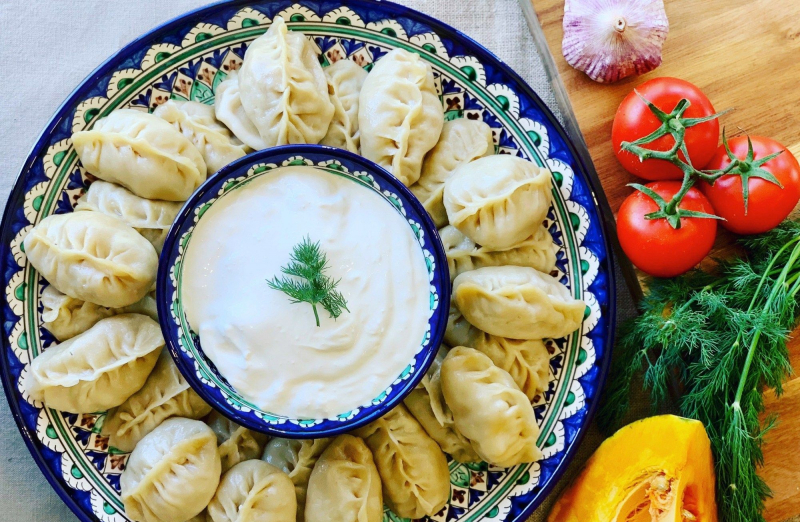
pinterest.es 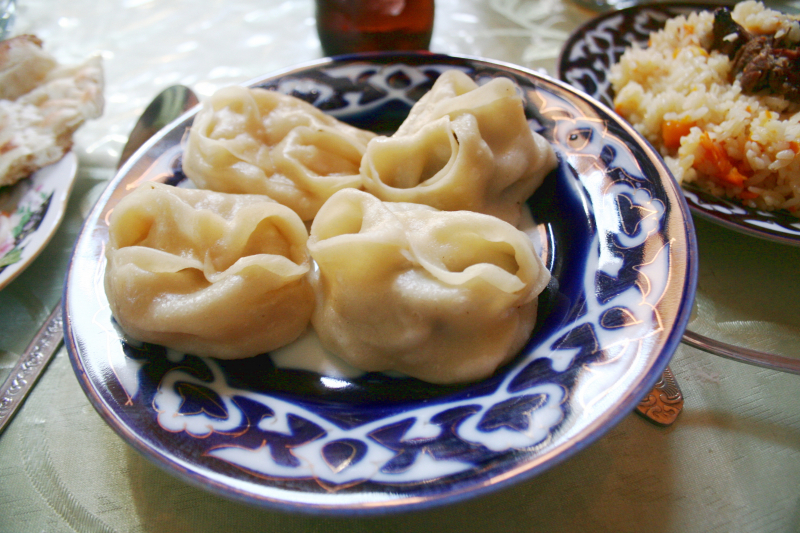
commons.wikimedia.org -
Samsa (also spelled somsa and samosa) is a sort of savory pastry prominent in Central Asian cuisine. Consider it the Uzbek equivalent of the Indian samosa, as well as other related variations such as the Lebanese sambousek and the Moroccan briouat.
Unlike deep-fried samosas in India, samsas in Uzbekistan and Central Asia are typically baked in an oven. They are often triangle-shaped and stuffed with a mixture of ground meat (generally lamb, beef, or chicken), tail fat, and spices. The most frequent type is meat samsa, although you can also find potato, pumpkin, or onion samsa.
This flaky pastry is a traditional morning meal in Uzbekistan, soft and crispy on the outside but juicy on the inside. It's traditionally consumed with tea in the morning or as a hot street food snack. If you intend to travel to this wonderful country, Manti is one of the must-try dishes for you.
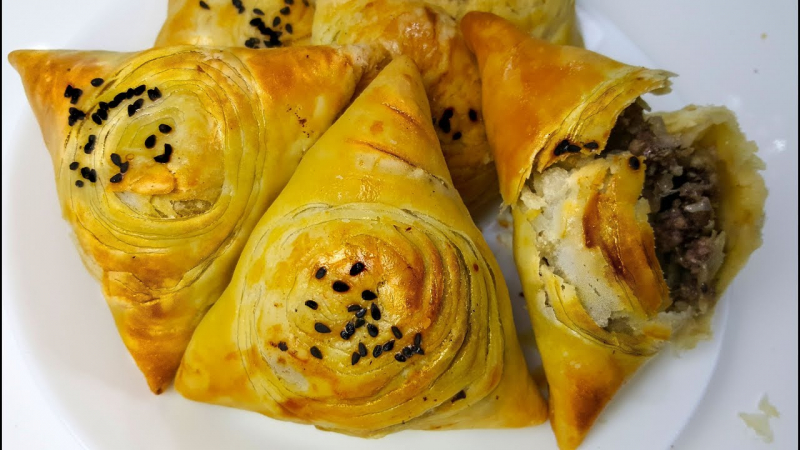
Photo: Ashpazkhane Mazar's Youtube Channel 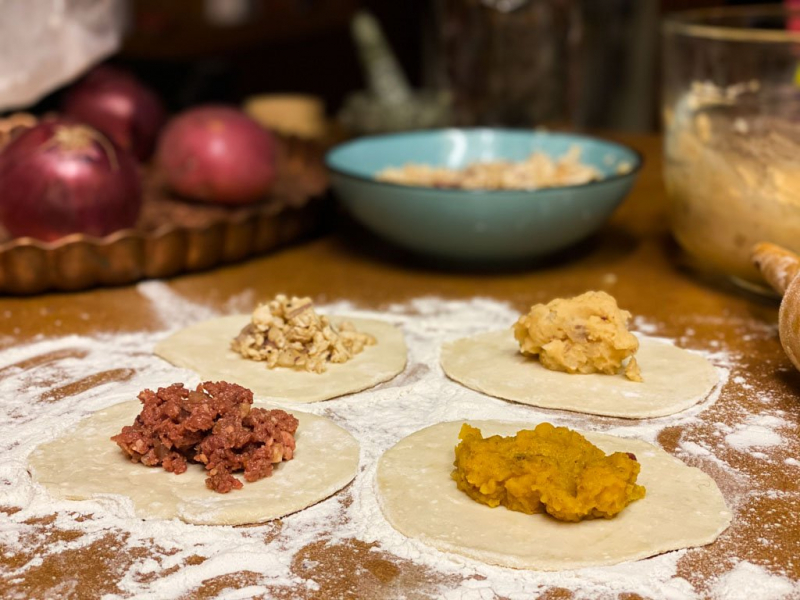
adventuresoflilnicki.com -
Chuchvara is a classic Uzbek dumpling that is frequently referred to as the Russian or Italian ravioli of Uzbekistan. It's similar to manti, but smaller in size, and it's generally boiled in a soup with meat and vegetables.
A basic dough is rolled out and cut into smaller squares before being stuffed with a mixture of minced meat (typically lamb or beef), onions, and seasonings to form chuchvara. After that, the dumplings are cooked in broth with fried meat and veggies. Think of chuchvara as the Uzbek counterpart of Chinese wonton soup, often served with a dusting of fresh dill.
Chuchvara dumplings are typically served in soup, but they can also be fried. Kovurma chuchvara, also known as fried chuchvara, is a type of fried chuchvara that is generally served with sour cream or cold yogurt on the side.
Osh kuktli chuchvara and ugra chuchvara are two other forms of chuchvara in Uzbekistan. The former is stuffed with finely chopped greens, onions, tail fat, and hard-boiled eggs, while the latter is made with classic chuchvara dumplings cooked in a broth with meatballs and noodles.
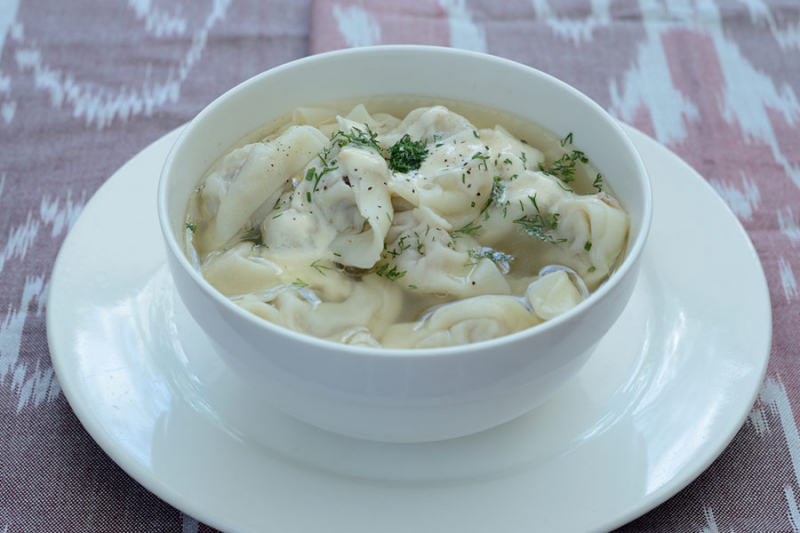
advantour.com Video: pratik yemek tarifleri's Youtube Channel -
Shurpa (also shorba, chorba) is a type of soup or stew that can be found in the cuisines of many nations in Central Asia, the Middle East, the Balkans, and Central/Eastern Europe. They can be prepared in a variety of ways, but they often comprise of huge chunks of beef simmered in a broth with potatoes, various vegetables, herbs, and spices.
Shurpa is a popular Uzbek soup cooked with lamb and thick slices of potato, carrot, onion, tomato, and sweet pepper. It's simply seasoned with salt and black pepper and is frequently served with fresh dill, coriander, or parsley. This rich, thick soup, served with bread, is robust and filling, and is one of the most popular dishes in Uzbek cuisine.
The most common shurpa recipe is lamb soup, however there are many others in Uzbekistan. It can be prepared in a variety of ways and with a variety of components like as chickpeas, salmon, or meatballs.
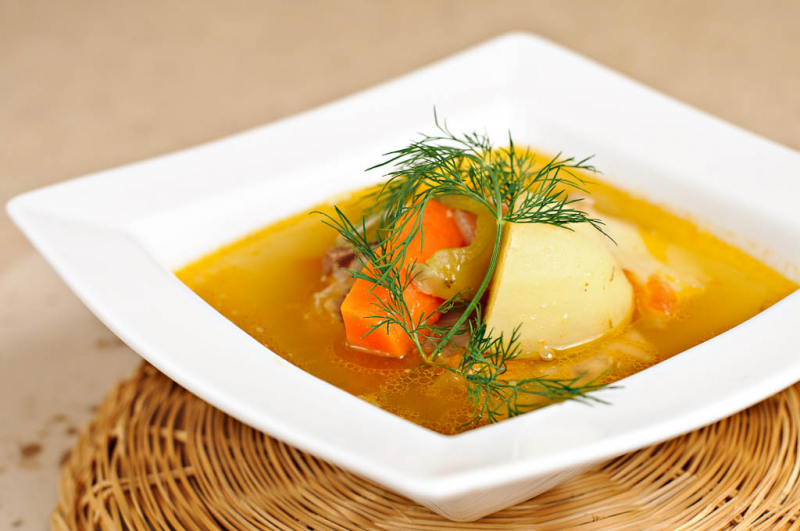
arbuz.com 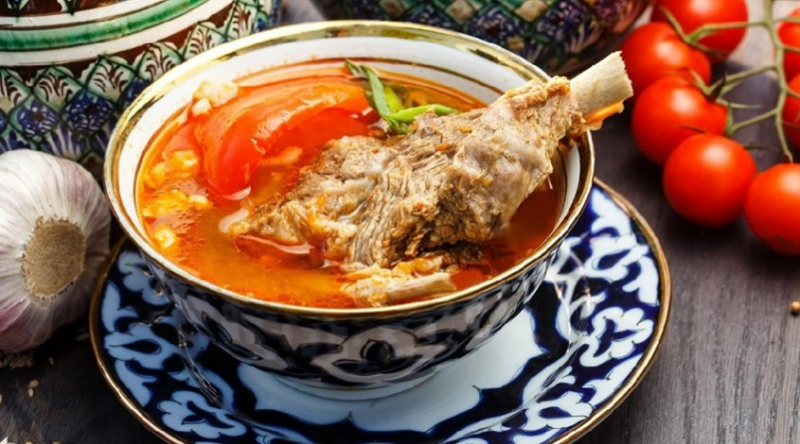
canaan.travel -
Lagman, like plov and shashlik, is one of the most popular Uzbek foods. It refers to a pulled noodle dish that originated in Xinjiang, northern China, and has since gained popularity in several Central Asian nations, including Uzbekistan, Kazakhstan, Kyrgyzstan, Tajikistan, and Turkmenistan.
Lagman is often eaten in one of two forms in Uzbekistan: as a substantial noodle stew or as a fried noodle dish. When eaten as a soup, the hand-stretched noodles are boiled in water before being served in a rich broth made with fried meat (typically lamb or beef), garlic, onions, potatoes, carrots, bell peppers, and other vegetables. Before serving, it's usually seasoned with cumin seed, salt, and pepper.
Fried lagman is very popular in Uzbekistan. It's composed up of stir-fried lagman noodles in a vegetable sauce with garlic, onions, bell peppers, carrots, potatoes, herbs, and other seasonings. It can be served on its own or with a fried egg on top.
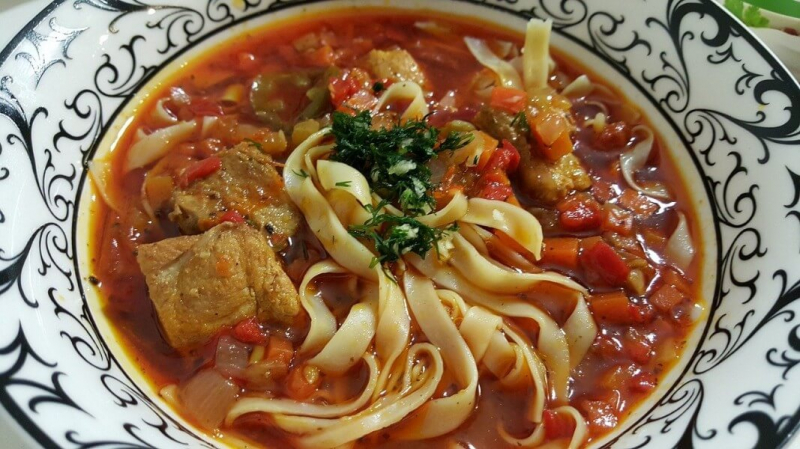
cookingcounty.com 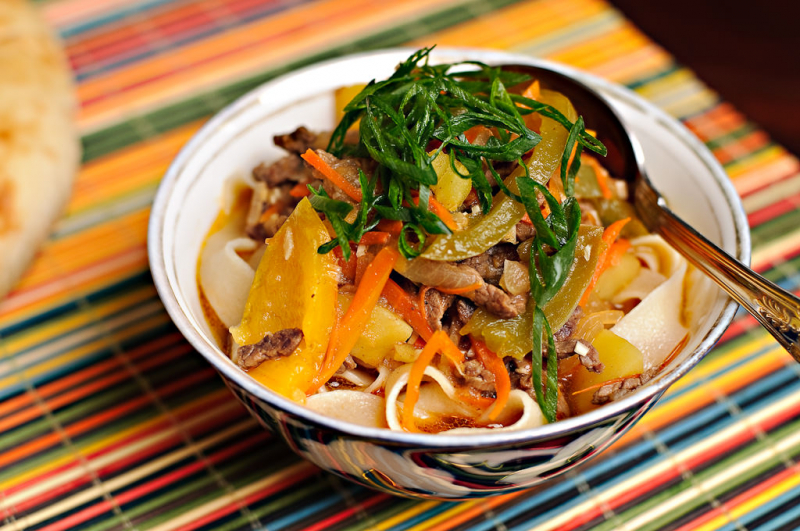
arbuz.com -
Shivit oshi is one of the most visually appealing Uzbek foods on the menu. It's a vivid dish of brilliant green noodles from Khiva, an Uzbek city on the Turkmen border. It's also known as "khorezm lagman."
Khorezm cuisine is distinct from that of the rest of Uzbekistan. Shivit oshi is a great illustration of how fresh herbs and vegetables are becoming increasingly prevalent in the diet. It's a traditional Uzbek meal made with hand-pulled lagman noodles flavored with fresh dill, which gives them their distinctive brilliant green hue.
Shivit oshi is undoubtedly Uzbekistan's most colorful dish. The brilliant green noodles have been infused with dill, making them both visually appealing and tasty. They are topped with a meat stew, peppers, tomatoes, onions, potatoes, and carrots, and served with yogurt or sour cream on the side.
Shivit oshi, a summer delicacy available uniquely in Khiva, is a must-try in Uzbekistan. It's traditionally served with a meat and vegetable stew with a dollop of sour cream or plain yogurt on the side. Shivit oshi is a traditional dish in Khiva. It's on the menus of every restaurant in Khiva's ancient city, but you won't find it anyplace else in Uzbekistan.
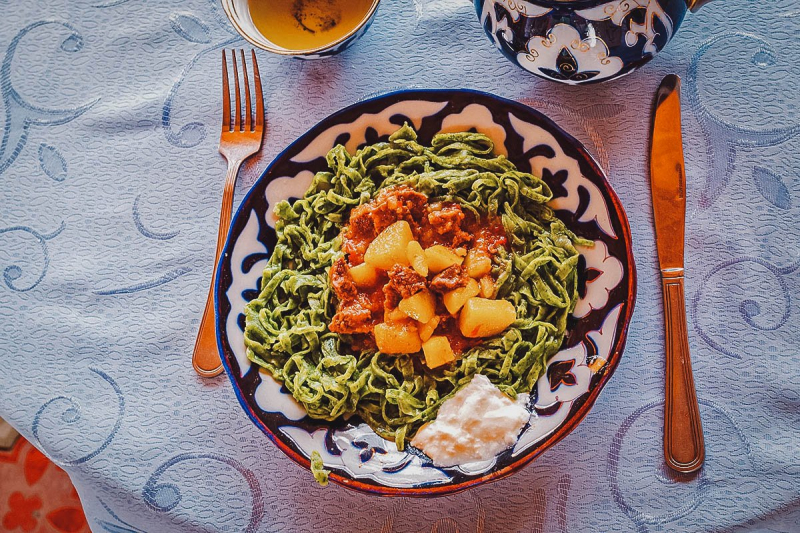
willflyforfood.net 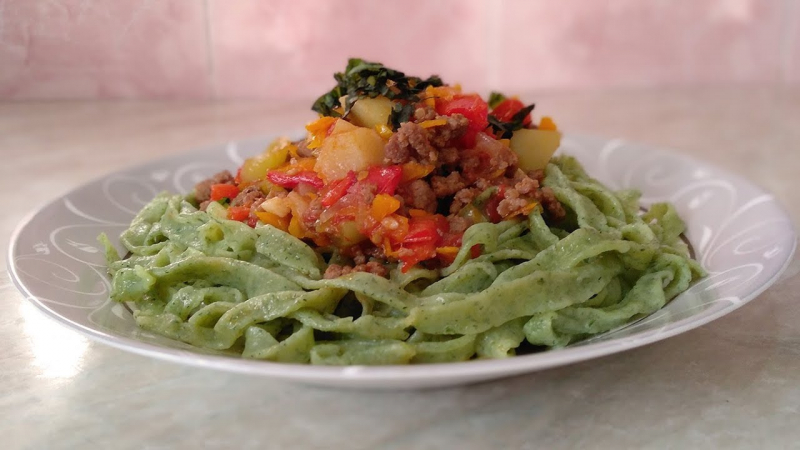
stringfixer.com -
Obi Non is a type of flat bread that is prominent in Afghan, Tajik, and Uzbek cuisine.. These gorgeous artistic oven cooked loaves originate in Uzbekistan and Afghanistan. These are thicker than naan and are made in Tandyr clay ovens.
Obi non, like plov, is one of the most important dishes in Uzbekistan. It refers to a sort of round, flat Uzbek bread made in a traditional clay oven known as a tandyr. Consider it the Uzbek equivalent of Indian naan bread, but thicker and with a decorative top.
In Uzbekistan, this common handmade bread is consumed with almost everything. It can be created in a variety of ways that differ from region to region, and even from town to town! It can be served simply or with other components such as meat, lamb fat, almonds, sesame seeds, and raisins. If you are planning a trip to Uzbekistan, Obi Non is a must-try meal.
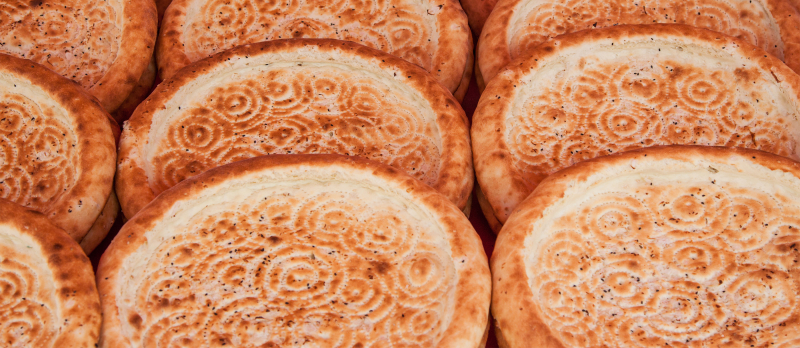
tasteatlas.com 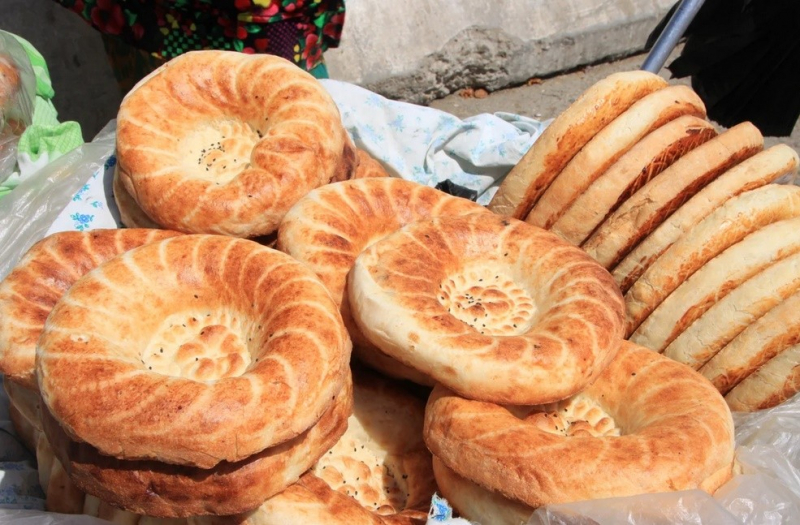
trust-travel.uz -
No article about Uzbek food would be complete without including Plov, the country's national dish. It is the Uzbek variant of hearty rice pilaf, a popular meal of cooked rice in broth that originated in South Asia, Central Asia, and the Middle East.
Plov (or palov) is Uzbekistan's most famous dish. It's a social and culturally significant cuisine that Uzbeks are extremely proud of. Plov is typically produced at home as a family dinner or in greater quantities to mark festivals and special occasions like as weddings. It is traditionally prepared in a kazan (big cooking pot).
Uzbek plov can be produced in a variety of ways, but the most popular is with a base of grated and seasoned onions, carrots, and sautéed in fat meat. Rice is added before being covered with water and boiled until completely cooked. Depending on the cook, other ingredients like as meat, chickpeas, veggies, raisins, and fruit can be added.
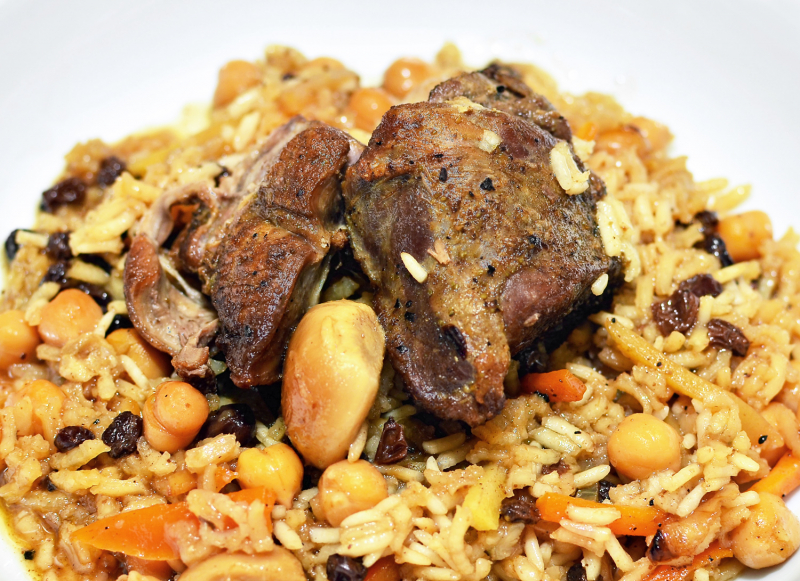
foodperestroika.com 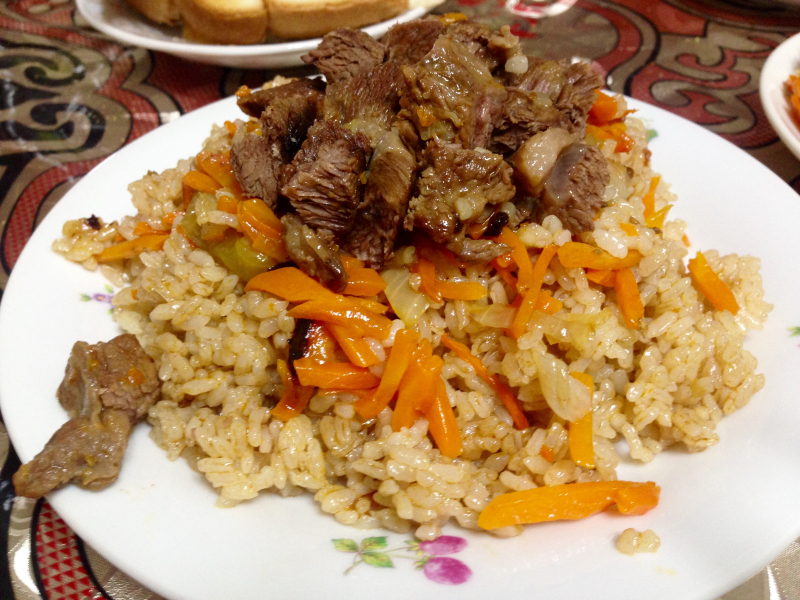
dipasanatani.com -
If you enjoy meat dishes, you should try shashlik. This delicious meal is one of the most popular dishes in Uzbek cuisine, and this dish refers to a type of shish kabob eaten in many nations throughout Central Asia, the Caucasus, and former Soviet republics such as Uzbekistan, Georgia, Armenia, Lithuania, and Ukraine. In fact, shashlik is derived from shashlyk, the Russian word for "shish kabob."
Shashlik is generally cooked with lamb, although this meal can also be made with various meats like as beef, chicken, and venison. Ground beef or fatty beef (or lamb) meat rolls are popular, as are skewered and cooked chicken legs. For a truly unforgettable experience, try grilled skewers laced with horse meat.
Shashlik skewers are often threaded with either simply meat or alternating bits of meat, fat, mushrooms, and veggies. If you prefer vegetarian fare, you can also order grilled skewers of potatoes, vegetables, or mushrooms.
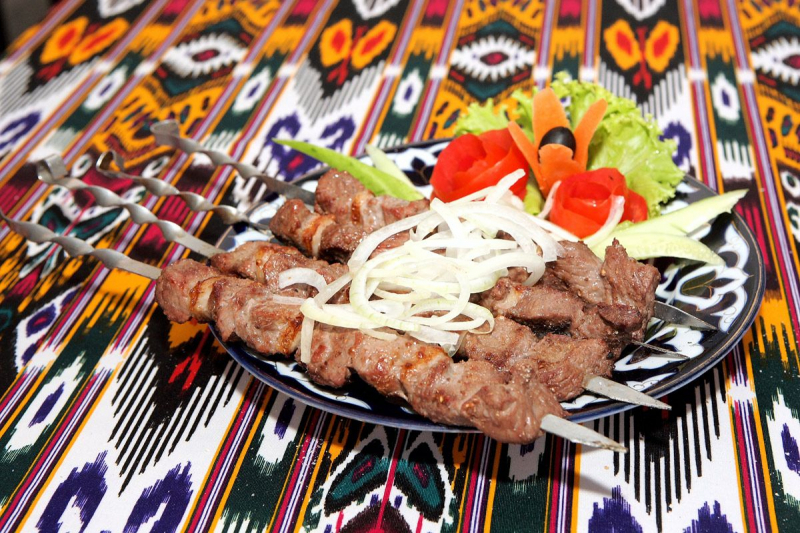
pinterest.com 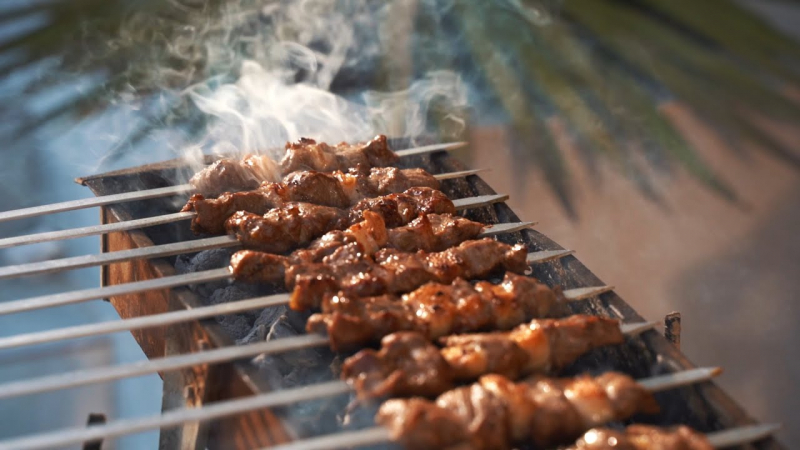
Photo: MuzAlimov's Youtube Channel -
Kazan kabob, as the name implies, is an Uzbek dish usually served in a kazan, a huge cooking pot popular in Central Asian and Balkan cuisines. The kazan is the same pot that is used to prepare plov.
Kazan kabob is not your average kabob dish. It is made with marinated meat, such as mutton or beef, that is pan-fried with potatoes before being covered and cooked in a kazan over low heat. It's generally served with onions and fresh veggies when it's thoroughly cooked and soft.
The meat pieces develop a distinctive softness and delicate aroma at the stake, which includes notes of natural marinade spices, natural freshness, and charcoal. They provide beef tenderloin, steeped in spices and spices, flavorful softness and a surprisingly pleasant flavor by using the classic recipe of the Uzbek Kazan kebab. Kazan Kabob is a must-try dinner if you're planning a vacation to Uzbekistan.
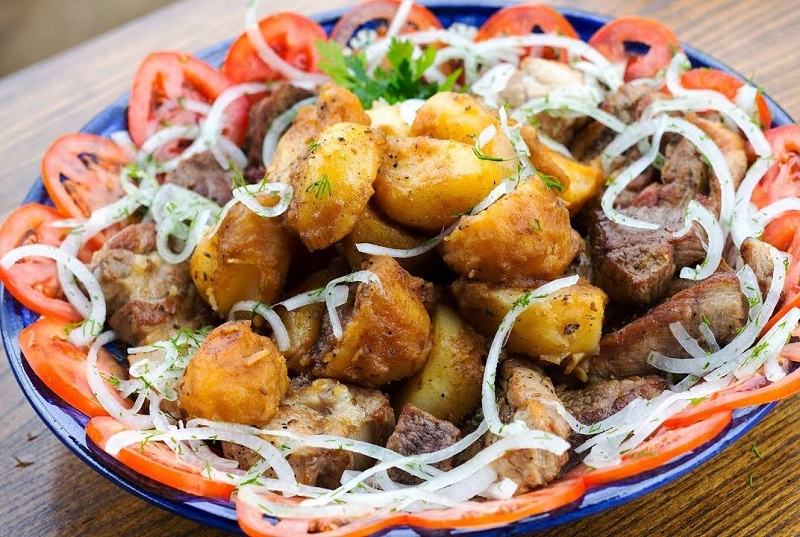
snapbuzzz.com 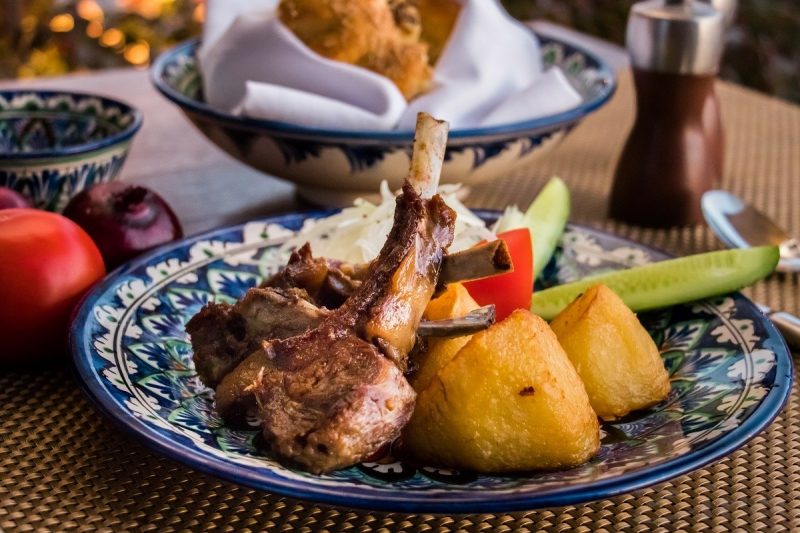
steemit.com













